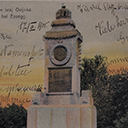0266 The Habsburgs and Public Monuments in 19th-Century Croatia
Identifiers (Article)
Abstract
This paper focuses on the analysis of the ways in which the cult of the Habsburg dynasty was promoted through public monuments in Croatia in the so-called Long 19th Century, from the end of the 18th to the early 20th century. Public sculpture in Croatia at this time was under a strong dominance of the national discourse – it mostly commemorated heroes of the Croatian cultural and sometimes also political history. Compared to the monuments to national heroes, the public monuments dedicated to members of the Habsburg family were smaller in number, and most often more modest in design and size. They can be divided into two basic groups – monuments commemorating events (Ereignisdenkmäler) from Croatian history connected with the Habsburgs, and monuments dedicated directly to individual members of the Habsburg family. The latter type of monuments is defined in this article in terms of what they commemorate and is divided into three groups: 1) monuments commemorating the role of the Habsburg emperors in the implementation of infrastructure projects, 2) monuments commemorating important anniversaries in the lives of individual members of the ruling house, and 3) monuments commemorating visits of Habsburgs to Croatia.
Statistics


License

This work is licensed under a Creative Commons Attribution-NonCommercial-NoDerivatives 4.0 International License.



